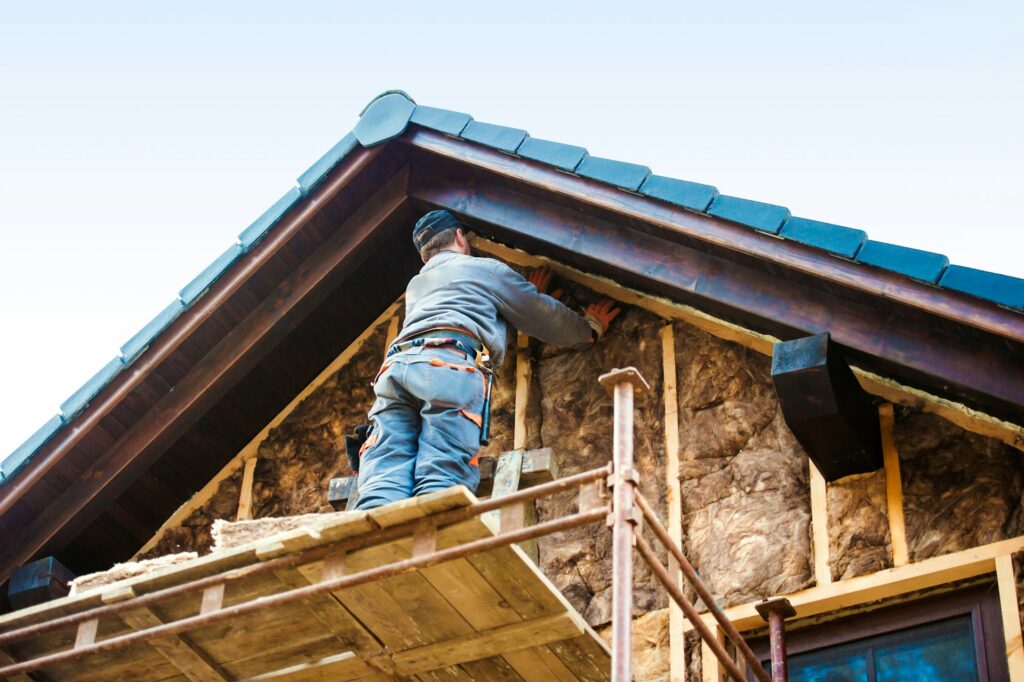As a homeowner in West Palm Beach & Palm Beach County, selecting the right attic insulation is pivotal in achieving optimal living comfort, energy efficiency, and cost savings. With numerous types of insulation available, it can be a daunting task to determine the perfect fit for your home. Before making any decisions, it’s essential to understand the unique features, benefits, and installation processes associated with each insulation type.
This guide will take you through the different attic insulation options, their advantages, and the vital installation steps to ensure you make the right choice – one that will enhance your home’s energy performance and improve overall living quality. Partnering with a leading Attic Insulation company like All Thermo can help you navigate these choices, ensuring a successful insulation project tailored to your West Palm Beach & Palm Beach County home’s requirements.
1. Fiberglass Insulation
Fiberglass insulation is a popular choice for homeowners due to its affordability and effectiveness. Available in two forms, batts, and loose-fill, this insulation type is made from tiny glass fibers that trap air, reducing heat transfer and providing excellent thermal resistance.
Benefits:
- Cost-effective: Fiberglass insulation is generally less expensive compared to other insulation materials, making it an attractive choice for budget-conscious homeowners.
- Easy installation: Batts and rolls can be easily fitted between attic joists, while loose-fill fiberglass can be blown into hard-to-reach areas using an insulation blower.
- Fire resistance: Fiberglass is nonflammable, providing homeowners with added protection against house fires.
- Noise reduction: Fiberglass insulation also functions as a sound barrier, reducing noise transmission between rooms or levels in your home.
Installation Tips:
- Use a utility knife and a straightedge to cut fiberglass batts or rolls to the required lengths and widths.
- Remember to wear protective gear, such as gloves, goggles, and a dust mask, while handling fiberglass.
- Ensure an air-vapor barrier on the warm side (living space side) of the insulation to prevent moisture accumulation.
2. Cellulose Insulation
Cellulose insulation is an eco-friendly option, primarily composed of recycled newspaper material mixed with flame-resistant chemicals. Installed using the blown-in method, lacking binding agents, or in a stabilized form, which includes adhesive, cellulose provides consistent insulation coverage in attics.
Benefits:
- Environmentally friendly: Composed of 75-85% recycled materials, cellulose insulation is a sustainable choice for homeowners seeking to minimize their ecological footprint.
- Pest resistance: Cellulose insulation is treated with borates, providing added resistance against pests like insects and rodents.
- Air sealing qualities: Blown-in cellulose insulation can effectively fill gaps and small cracks, reducing air infiltration and improving overall energy efficiency.
- Superior thermal performance: Cellulose insulation provides a higher R-value (thermal resistance) per inch compared to fiberglass, enhancing attic insulation effectiveness.
Installation Tips:
- Rely on a professional or rent a blowing machine designed for installing cellulose insulation.
- During installation, ensure at least 8-10 inches of thickness to achieve an optimal R-value.
- If upgrading from existing insulation, cellulose can be blown on top to enhance insulation efficiency.
3. Spray Foam Insulation
Spray foam insulation is a versatile, high-performance material that comes in two forms: open-cell and closed-cell. Composed of polyurethane, this insulation type expands upon application, sealing gaps, cracks, and crevices while providing excellent thermal resistance.
Benefits:
- Seamless coverage: Spray foam’s expansion and adherence to surfaces provide a continuous, monolithic insulation barrier that eliminates gaps and minimizes air leakage.
- High R-value: Closed-cell spray foam offers one of the highest R-values per inch among insulation materials, making it an ideal choice for achieving superior thermal resistance.
- Moisture resistance: Closed-cell spray foam acts as a moisture barrier, protecting your home from potential water damage and mold growth.
- Structural integrity: Closed-cell spray foam can enhance the structural strength of your attic, providing added stability to your home.
Installation Tips:
- Due to the complexities and potential hazards (such as incorrect mixture or over-expansion) associated with spray foam insulation, it’s highly recommended to use a professional installer.
- Proper ventilation is essential during and after installation, as spray foam releases chemicals that could be harmful if inhaled.
4. Rigid Foam Insulation
Rigid foam insulation, typically made from polystyrene, polyurethane, or polyisocyanurate, is composed of closed-cell foam boards that can be cut to size and installed on attic floors or walls to enhance energy efficiency.
Benefits:
- High R-value: Rigid foam boards provide excellent thermal resistance comparable to that of spray foam insulation.
- Moisture resistance: These insulation boards are highly resistant to water absorption and can act as a vapor barrier, protecting your attic floor from moisture damage.
- Enhanced air sealing: Rigid foam boards effectively block drafts and air infiltration, providing enhanced insulation performance when installed correctly.
Installation Tips:
- Cut foam boards precisely to fit snugly between attic joists, and apply caulking or tape to seal gaps between boards.
- For optimal energy efficiency, add a second layer of foam boards perpendicular to the first layer, ensuring stagger joints and tape seams.
- When installing in the attic walls, use appropriate fasteners to secure the foam boards and ensure no gaps exist between the wall and the insulation.
These four insulation types each offer unique advantages, depending on your specific attic insulation needs. By understanding their features, benefits, and installation processes, you can make an informed decision, selecting the best insulation option for your West Palm Beach & Palm Beach County home. Collaborating with All Thermo’s expert insulation team ensures the perfect insulation solution for your home, tailored to your preferences and expectations.
Unlock the Full Potential of Your Attic Insulation with All Thermo
In conclusion, choosing the right attic insulation for your West Palm Beach & Palm Beach County home not only bolsters thermal effectiveness but also elevates living comfort, energy efficiency, and cost savings. By exploring the features, benefits, and installation processes of fiberglass, cellulose, spray foam, and rigid foam insulation, you can make a well-informed decision tailored to your home’s unique requirements.
As the highest-rated attic cleaning, insulation removal, air ductwork replacement, and attic insulation company in the West Palm Beach & Palm Beach County areas, All Thermo is committed to delivering unparalleled service, ensuring successful insulation projects customized to your preferences. Our team of skilled professionals will guide you through the entire process, from selecting the right insulation type to providing top-tier installation services. Schedule an appointment for our attic insulation services today!

